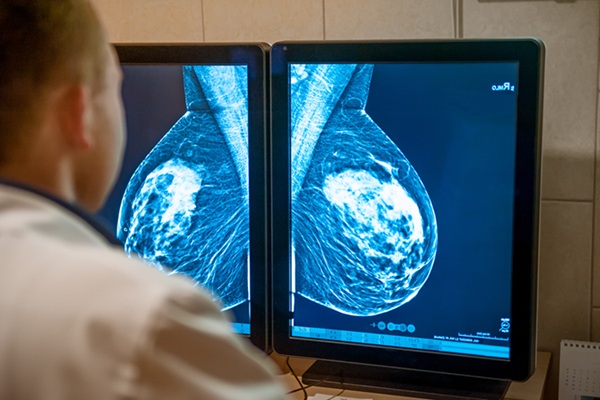American College of Radiology Releases Initial Use Cases in AI Library
|
By MedImaging International staff writers Posted on 03 Sep 2018 |

Image: The American College of Radiology Data Science Institute has started releasing its first AI use cases in the ACR DSI TOUCH-AI library for generating feedback (Photo courtesy of the ACR).
The American College of Radiology Data Science Institute {(ACR DSI) Reston, VA, USA} has started releasing its first artificial intelligence (AI) use cases in the ACR DSI TOUCH-AI library for generating feedback ahead of the projected release of all of the use cases in the fall.
The ACR DSI had launched medical imaging AI use case development in May 2017 to develop and use AI to assist radiologists in improving medical imaging care. According to ACR DSI, individual entities developing AI can find it difficult to solve healthcare problems in a comprehensive way that provides value to the clinical setting. After its release, the freely available use cases in the ACR DSI TOUCH-AI library will make the areas in which AI can improve patient care quite clear for vendors, clinicians and patients.
Apart from medical specialty societies and standards organizations, the ACR DSI has asked for feedback on the use cases from various AI, analytics, reporting systems, EMRs, and PACS organizations. It is also open to all organizations that are currently developing or supporting AI applications in radiology.
“As we are working to obtain and incorporate feedback into our preliminary use cases, we are seeing a groundswell of support for the information we are providing,” said Laura Coombs, ACR senior director of informatics. “This is an exciting stage of use case development because every bit of feedback, no matter how small, has the potential to profoundly affect both the industry and clinicians’ ability to create and deploy AI technology.”
Related Links:
American College of Radiology Data Science Institute
The ACR DSI had launched medical imaging AI use case development in May 2017 to develop and use AI to assist radiologists in improving medical imaging care. According to ACR DSI, individual entities developing AI can find it difficult to solve healthcare problems in a comprehensive way that provides value to the clinical setting. After its release, the freely available use cases in the ACR DSI TOUCH-AI library will make the areas in which AI can improve patient care quite clear for vendors, clinicians and patients.
Apart from medical specialty societies and standards organizations, the ACR DSI has asked for feedback on the use cases from various AI, analytics, reporting systems, EMRs, and PACS organizations. It is also open to all organizations that are currently developing or supporting AI applications in radiology.
“As we are working to obtain and incorporate feedback into our preliminary use cases, we are seeing a groundswell of support for the information we are providing,” said Laura Coombs, ACR senior director of informatics. “This is an exciting stage of use case development because every bit of feedback, no matter how small, has the potential to profoundly affect both the industry and clinicians’ ability to create and deploy AI technology.”
Related Links:
American College of Radiology Data Science Institute
Latest Industry News News
- GE HealthCare and NVIDIA Collaboration to Reimagine Diagnostic Imaging
- Patient-Specific 3D-Printed Phantoms Transform CT Imaging
- Siemens and Sectra Collaborate on Enhancing Radiology Workflows
- Bracco Diagnostics and ColoWatch Partner to Expand Availability CRC Screening Tests Using Virtual Colonoscopy
- Mindray Partners with TeleRay to Streamline Ultrasound Delivery
- Philips and Medtronic Partner on Stroke Care
- Siemens and Medtronic Enter into Global Partnership for Advancing Spine Care Imaging Technologies
- RSNA 2024 Technical Exhibits to Showcase Latest Advances in Radiology
- Bracco Collaborates with Arrayus on Microbubble-Assisted Focused Ultrasound Therapy for Pancreatic Cancer
- Innovative Collaboration to Enhance Ischemic Stroke Detection and Elevate Standards in Diagnostic Imaging
- RSNA 2024 Registration Opens
- Microsoft collaborates with Leading Academic Medical Systems to Advance AI in Medical Imaging
- GE HealthCare Acquires Intelligent Ultrasound Group’s Clinical Artificial Intelligence Business
- Bayer and Rad AI Collaborate on Expanding Use of Cutting Edge AI Radiology Operational Solutions
- Polish Med-Tech Company BrainScan to Expand Extensively into Foreign Markets
- Hologic Acquires UK-Based Breast Surgical Guidance Company Endomagnetics Ltd.
Channels
Radiography
view channel
AI Generates Future Knee X-Rays to Predict Osteoarthritis Progression Risk
Osteoarthritis, a degenerative joint disease affecting over 500 million people worldwide, is the leading cause of disability among older adults. Current diagnostic tools allow doctors to assess damage... Read more
AI Algorithm Uses Mammograms to Accurately Predict Cardiovascular Risk in Women
Cardiovascular disease remains the leading cause of death in women worldwide, responsible for about nine million deaths annually. Despite this burden, symptoms and risk factors are often under-recognized... Read moreMRI
view channel
Novel Imaging Approach to Improve Treatment for Spinal Cord Injuries
Vascular dysfunction in the spinal cord contributes to multiple neurological conditions, including traumatic injuries and degenerative cervical myelopathy, where reduced blood flow can lead to progressive... Read more
AI-Assisted Model Enhances MRI Heart Scans
A cardiac MRI can reveal critical information about the heart’s function and any abnormalities, but traditional scans take 30 to 90 minutes and often suffer from poor image quality due to patient movement.... Read more
AI Model Outperforms Doctors at Identifying Patients Most At-Risk of Cardiac Arrest
Hypertrophic cardiomyopathy is one of the most common inherited heart conditions and a leading cause of sudden cardiac death in young individuals and athletes. While many patients live normal lives, some... Read moreUltrasound
view channel
Ultrasound Probe Images Entire Organ in 4D
Disorders of blood microcirculation can have devastating effects, contributing to heart failure, kidney failure, and chronic diseases. However, existing imaging technologies cannot visualize the full network... Read more
Disposable Ultrasound Patch Performs Better Than Existing Devices
Wearable ultrasound devices are widely used in diagnostics, rehabilitation monitoring, and telemedicine, yet most existing models rely on lead-based piezoelectric ceramics that pose health and environmental risks.... Read moreNuclear Medicine
view channel
Radiotheranostic Approach Detects, Kills and Reprograms Aggressive Cancers
Aggressive cancers such as osteosarcoma and glioblastoma often resist standard therapies, thrive in hostile tumor environments, and recur despite surgery, radiation, or chemotherapy. These tumors also... Read more
New Imaging Solution Improves Survival for Patients with Recurring Prostate Cancer
Detecting recurrent prostate cancer remains one of the most difficult challenges in oncology, as standard imaging methods such as bone scans and CT scans often fail to accurately locate small or early-stage tumors.... Read moreGeneral/Advanced Imaging
view channel
AI Tool Improves Medical Imaging Process by 90%
Accurately labeling different regions within medical scans, a process known as medical image segmentation, is critical for diagnosis, surgery planning, and research. Traditionally, this has been a manual... Read more
New Ultrasmall, Light-Sensitive Nanoparticles Could Serve as Contrast Agents
Medical imaging technologies face ongoing challenges in capturing accurate, detailed views of internal processes, especially in conditions like cancer, where tracking disease development and treatment... Read more
AI Algorithm Accurately Predicts Pancreatic Cancer Metastasis Using Routine CT Images
In pancreatic cancer, detecting whether the disease has spread to other organs is critical for determining whether surgery is appropriate. If metastasis is present, surgery is not recommended, yet current... Read moreImaging IT
view channel
New Google Cloud Medical Imaging Suite Makes Imaging Healthcare Data More Accessible
Medical imaging is a critical tool used to diagnose patients, and there are billions of medical images scanned globally each year. Imaging data accounts for about 90% of all healthcare data1 and, until... Read more





















